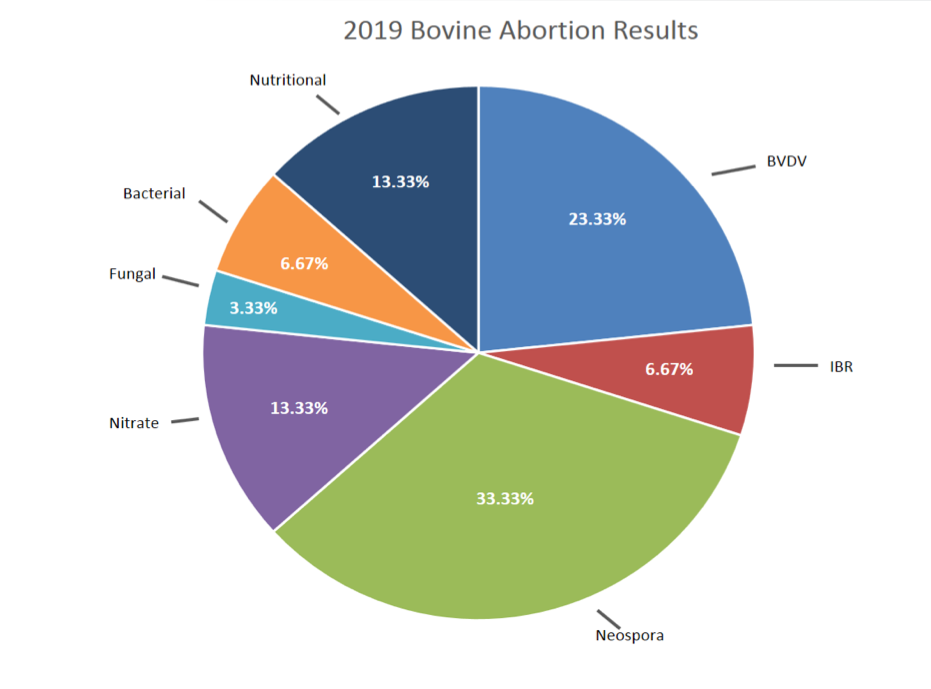January 2020
Bovine Abortion Results: 2019
By Dr. Gregg Hanzlicek
Abortion workups can be very frustrating for diagnosticians, practitioners and producers. Approximately 19.2% of the bovine submissions submitted to KSVDL in 2019 resulted in a “definitive” diagnosis (this result is similar to the previous two years). Definitive diagnosis means an organism (IBR, BVD, bacteria), elevated compounds (ocular nitrate levels), deficient vitamins/minerals or histologic lesions were found in the submitted samples.
There are several reasons why a definitive diagnosis is not resulted on any submission, including: the organism is no longer present; pathogens are not involved; excessive tissue autolysis is present; and not all appropriate tissues were submitted.
2019 abortion workup results:
The pie chart below includes the abortion results for 2019. BVDV was found in almost 25% of the abortion cases. Neospora was found in over 30% of the cases, but very few of the cases included positive histological lesions. Interestingly, IBR was the most common pathogen (28%) isolated from aborted fetuses in 2018, but was found in less than 7% of the submissions in 2019. Several bacteria were identified in several submissions; all were sporadic and no one bacteria was consistently found. Additionally, several fungal and nitrate associated abortions were diagnosed. Nutritional associated cases involved diets that were either protein or energy malnutrition or a combination of the two.
 |
Key points from 2019 results:
The odds of receiving a definitive diagnosis in 2019 was greater if several sections of placenta (fresh and fixed) or multiple fetuses/tissues were submitted. Table 1.
|
Table 1 |
|||
|
Category |
N |
Odds ratio |
95% CI |
|
Placenta included in submission |
33 |
2.8 |
1.2 - 6.6 |
|
>1 set of tissues submitted in a case |
26 |
1.5 |
0.54 - 4.14 |
Selecting histology, in addition to the KSVDL Bovine Abortion Tissue PCR Panel (MDL-3385), increased the odds of a definitive diagnosis by almost 30%.
Summary:
Abortion diagnostic workups can be very frustrating for all involved parties. Each year the percentage of associated abortions by “cause” is extremely variable; therefore, depending on previous year’s results to guide one to the cause is many times unrewarding. Although not always possible, including several sections of placenta and multiple fetuses or samples in any abortion submission does increase the odds of a definitive diagnosis.
NEXT: Bovine Trichomoniasis Testing Reminder
Return to Index
